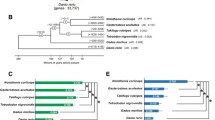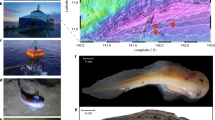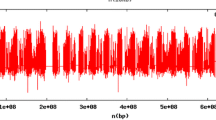Abstract
Cetaceans and pinnipeds are lineages of mammals that have independently returned to the aquatic environment, acquiring varying degrees of dependence on it while sharing adaptations for underwater living. Here, we focused on one critical adaptation from both groups, their ability to withstand the ischemia and reperfusion experienced during apnea diving, which can lead to the production of reactive oxygen species (ROS) and subsequent oxidative damage. Previous studies have shown that cetaceans and pinnipeds possess efficient antioxidant enzymes that protect against ROS. In this study, we investigated the molecular evolution of key antioxidant enzyme genes (CAT, GPX3, GSR, PRDX1, PRDX3, and SOD1) and the ROS-producing gene XDH, in cetaceans and pinnipeds lineages. We used the ratio of non-synonymous (dN) to synonymous (dS) substitutions as a measure to identify signatures of adaptive molecular evolution in these genes within and between the two lineages. Additionally, we performed protein modeling and variant impact analyzes to assess the functional consequences of observed mutations. Our findings revealed distinct selective regimes between aquatic and terrestrial mammals in five of the examined genes, including divergences within cetacean and pinniped lineages, between ancestral and recent lineages and between crowns groups. We identified specific sites under positive selection unique to Cetacea and Pinnipedia, with one site showing evidence of convergent evolution in species known for their long and deep-diving capacities. Notably, many sites under adaptive selection exhibited radical changes in amino acid properties, with some being damaging mutations in human variations, but with no apparent detrimental impacts on aquatic mammals. In conclusion, our study provides insights into the adaptive changes that have occurred in the antioxidant systems of aquatic mammals throughout their evolutionary history. We observed both distinctive features within each group of Cetacea and Pinnipedia and instances of convergence. These findings highlight the dynamic nature of the antioxidant system in response to challenges of the aquatic environment and provide a foundation for further investigations into the molecular mechanisms underlying these adaptations.



Similar content being viewed by others
References
Adzhubei IA, Schmidt S, Peshkin L, Ramensky VE, Gerasimova A, Bork P, Kondrashov AS, Sunyaev SR (2010) A method and server for predicting damaging missense mutations. Nat Methods 7(4):248–249
Allen KN, Vázquez-Medina JP (2019) Natural tolerance to ischemia and hypoxemia in diving mammals: a review. Front Physiol 10(September):1199
Berta A, Churchill M, Boessenecker RW (2018) The origin and evolutionary biology of pinnipeds: seals, sea lions, and walruses. Annu Rev Earth Planet Sci 46(1):203–228
Betts MJ, Russell RB (2003) Amino acid properties and consequences of substitutions. Bioinform Genet 317:289
Blix AS (2018) Adaptations to deep and prolonged diving in phocid seals. J Exp Biol. https://doi.org/10.1242/jeb.182972
Brigelius-Flohé R, Maiorino M (2013) Glutathione peroxidases. Biochem Biophys Acta 1830(5):3289–3303
Cabrera AA, Bérubé M, Lopes XM, Louis M, Oosting T, Rey-Iglesia A, Rivera-León VE, Székely D, Lorenzen ED, Palsbøll PJ (2021) A genetic perspective on cetacean evolution. Annu Rev Ecol Evol Syst 52(1):131–151
Cantú-Medellín N, Byrd B, Hohn A, Vázquez-Medina JP, Zenteno-Savín T (2011) Differential antioxidant protection in tissues from marine mammals with distinct diving capacities. Shallow/short vs. deep/long divers. Comp Biochem Physiol Part A Mol Integr Physiol 158(4):438–443
Cao Z, Roszak AW, Gourlay LJ, Lindsay JG, Isaacs NW (2005) Bovine mitochondrial Peroxiredoxin III forms a two-ring Catenane. Structure 13(11):1661–1664
Cao Z, Bhella D, Lindsay JG (2007) Reconstitution of the mitochondrial PrxIII antioxidant defence pathway: general properties and factors affecting PrxIII activity and oligomeric state. J Mol Biol 372(4):1022–1033
Castellini M, Mellish JA (2023) Physiology of marine mammals: adaptations to the ocean. CRC Press, Boca Raton
Chance B, Sies H, Boveris A (1979) Hydroperoxide metabolism in mammalian organs. Physiol Rev 59(3):527–605
Chikina M, Robinson JD, Clark NL (2016) Hundreds of genes experienced convergent shifts in selective pressure in marine mammals. Mol Biol Evol 33(9):2182–2192
Davis RW (2014) A review of the multi-level adaptations for maximizing aerobic dive duration in marine mammals: from biochemistry to behavior. J Comp Physiol B Biochem Syst Environ Physiol 184(1):23–53
Davis RW (2019) Marine mammals: adaptations for an aquatic life. Springer, Berlin
Edgar RC (2004) MUSCLE: a multiple sequence alignment method with reduced time and space complexity. BMC Bioinform 5(August):113
Elsner R, Oyasaeter S, Almaas R, Saugstad OD (1998) Diving seals, ischemia-reperfusion and oxygen radicals. Comp Biochem Physiol Part A Mol Integr Physiol 119(4):975–980
Foote AD, Liu Y, Thomas GWC, Vinař T, Alföldi J, Deng J, Dugan S et al (2015) Convergent evolution of the genomes of marine mammals. Nat Genet 47(3):272–275
Fordyce RE (2018) Cetacean evolution. In: Würsig B, Thewissen JGM, Kovacs KM (eds) Encyclopedia of marine mammals, 3rd edn. Academic Press, pp 180–185
García-Castañeda O, Gaxiola-Robles R, Kanatous S, Zenteno-Savín T (2017) Circulating glutathione concentrations in marine, semiaquatic, and terrestrial mammals. Mar Mamm Sci 33(3):738–747
Geßner C, Krüger A, Folkow LP, Fehrle W, Mikkelsen B, Burmester T (2022) Transcriptomes suggest that pinniped and cetacean brains have a high capacity for aerobic metabolism while reducing energy-intensive processes such as synaptic transmission. Front Mol Neurosci. https://doi.org/10.3389/fnmol.2022.877349
Goddard TD, Huang CC, Meng EC, Pettersen EF, Couch GS, Morris JH, Ferrin TE (2018) UCSF ChimeraX: meeting modern challenges in visualization and analysis. Protein Sci: Publ Protein Soc 27(1):14–25
Goldman N, Yang Z (1994) Models of DNA substitution and the discrimination of evolutionary parameters. In: Proceedings of the XVIIth international biometrics 1
Halliwell JM, Gutteridge B (2015) Free radicals in biology and medicine, vol Fifth. Oxford University Press, Oxford
Hancock JT (2021) Oxygen is instrumental for biological signaling: an overview. Oxygen 1(1):3–15
Hao Y, Qu Y, Song G, Lei F (2019) Genomic insights into the adaptive convergent evolution. Curr Genom 20(2):81–89
Hewitt OH, Degnan SM (2023) Antioxidant enzymes that target hydrogen peroxide are conserved across the animal kingdom, from sponges to mammals. Sci Rep 13(1):1–13
Hindell MA, Slip DJ, Burton HR, Bryden MM (1992) Physiological implications of continuous, prolonged, and deep dives of the southern elephant seal (Mirounga Leonina). Can J Zool 70(2):370–379
Hoang DT, Chernomor O, Haeseler AV, Minh BQ, Vinh LS (2017) UFBoot2: improving the ultrafast bootstrap approximation. Mol Biol Evol 35(2):518–522
Hooker SK, Fahlman A, Castellini M, Mellish J (2015) Pressure regulation. Marine mammal physiology: requisites for ocean living, pp 69–92
Janecka J, Chowdhary B, Murphy W (2012) Exploring the correlations between sequence evolution rate and phenotypic divergence across the mammalian tree provides insights into adaptive evolution. J Biosci 37(5):897–909
Jones DP (2006) Redefining oxidative stress. Antioxid Redox Signal 8(9–10):1865–1879
Jumper J, Evans R, Pritzel A, Green T, Figurnov M, Ronneberger O, Tunyasuvunakool K et al (2021) Highly accurate protein structure prediction with AlphaFold. Nature 596(7873):583–589
Kalogeris T, Baines CP, Krenz M, Korthuis RJ (2012) Cell biology of ischemia/reperfusion injury. Int Rev Cell Mol Biol 298:229–317
Kelley EE, Khoo NKH, Hundley NJ, Malik UZ, Freeman BA, Tarpey MM (2010) Hydrogen peroxide is the major oxidant product of xanthine oxidase. Free Radical Biol Med 48(4):493–498
Kirkman HN, Gaetani GF (2007) Mammalian catalase: a venerable enzyme with new mysteries. Trends Biochem Sci 32(1):44–50
Kosakovsky P, Sergei L, Frost SDW (2005) Not so different after all: a comparison of methods for detecting amino acid sites under selection. Mol Biol Evol 22(5):1208–1222
Kosakovsky P, Sergei L, Poon AFY, Velazquez R, Weaver S, Hepler NL, Murrell B, Shank SD et al (2020a) HyPhy 2.5-A customizable platform for evolutionary hypothesis testing using phylogenies. Mol Biol Evol 37(1):295–299
Kosakovsky P, Sergei L, Wisotsky SR, Escalante A, Magalis BR, Weaver S (2020b) Contrast-FEL—a test for differences in selective pressures at individual sites among clades and sets of branches. Mol Biol Evol 38(3):1184–1198
Lanfear R, Frandsen PB, Wright AM, Senfeld T, Calcott B (2017) PartitionFinder 2: new methods for selecting partitioned models of evolution for molecular and morphological phylogenetic analyses. Mol Biol Evol 34(3):772–773
Levartovsky D, Lagziel A, Sperling O, Liberman U, Yaron M, Hosoya T, Ichida K, Peretz H (2000) XDH gene mutation is the underlying cause of classical xanthinuria: a second report. Kidney Int 57(6):2215–2220
Löytynoja A (2014) Phylogeny-aware alignment with PRANK. Methods Mol Biol 1079:155–170
Maldonado E, Sunagar K, Almeida D, Vasconcelos V, Antunes A (2014) IMPACT_S: integrated multiprogram platform to analyze and combine tests of selection. PLoS ONE 9(10):e96243
Martens GA, Folkow LP, Burmester T, Geßner C (2022) Elevated antioxidant defence in the brain of deep-diving pinnipeds. Front Physiol 13(December):1064476
McClellan DA (2013) Directional Darwinian Selection in Proteins. BMC Bioinform 14(Suppl 13):S6
McDonald BI, Ponganis PJ (2013) Insights from venous oxygen profiles: oxygen utilization and management in diving California sea lions. J Exp Biol 216(Pt 17):3332–3341
McGowen MR, Gatesy J, Wildman DE (2014) Molecular evolution tracks macroevolutionary transitions in Cetacea. Trends Ecol Evol 29(6):336–346
Michiels C, Raes M, Toussaint O, Remacle J (1994) Importance of Se-glutathione peroxidase, catalase, and Cu/Zn-SOD for cell survival against oxidative stress. Free Radical Biol Med 17(3):235–248
Morley KL, Kazlauskas RJ (2005) Improving enzyme properties: when are closer mutations better? Trends Biotechnol 23(5):231–237
Murphy MP (2009) How mitochondria produce reactive oxygen species. Biochem J 417(1):1–13
Murrell B, Moola S, Mabona A, Weighill T, Sheward D, Kosakovsky SL, Scheffler K (2013) FUBAR: a fast, unconstrained Bayesian approximation for inferring selection. Mol Biol Evol 30(5):1196–1205
Murrell B, Weaver S, Smith MD, Wertheim JO, Murrell S, Aylward A, Eren K et al (2015) Gene-wide identification of episodic selection. Mol Biol Evol 32(5):1365–1371
Nery MF, Arroyo JI, Opazo JC (2013) Accelerated evolutionary rate of the myoglobin gene in long-diving whales. J Mol Evol 76(6):380–387
Nguyen LT, Schmidt HA, Haeseler AV, Minh BQ (2015) IQ-TREE: a fast and effective stochastic algorithm for estimating maximum-likelihood phylogenies. Mol Biol Evol 32(1):268–274
Nielsen R, Yang Z (1998) Likelihood models for detecting positively selected amino acid sites and applications to the HIV-1 envelope gene. Genetics 148(3):929–936
Pettersen EF, Goddard TD, Huang CC, Meng EC, Couch GS, Croll TI, Morris JH, Ferrin TE (2021) UCSF ChimeraX: structure visualization for researchers, educators, and developers. Protein Sci: Publ Protein Soc 30(1):70–82
Pond PLK, Frost SDW, Muse SV (2005) HyPhy: hypothesis testing using phylogenies. Bioinformatics 21(5):676–679
Ponganis PJ (2019) State of the art review: from the seaside to the bedside: insights from comparative diving physiology into respiratory, sleep and critical care. Thorax 74(5):512–518
Quick NJ, Cioffi WR, Shearer JM, Fahlman A, Read AJ (2020) Extreme diving in mammals: first estimates of behavioural aerobic dive limits in Cuvier’s beaked whales. J Exp Biol. https://doi.org/10.1242/jeb.222109
Ramirez JM, Folkow LP, Blix AS (2007) Hypoxia tolerance in mammals and birds: from the wilderness to the clinic. Annu Rev Physiol 69:113–143
Ratovitski T, Corson LB, Strain J, Wong P, Cleveland DW, Culotta VC, Borchelt DR (1999) Variation in the biochemical/biophysical properties of mutant superoxide dismutase 1 enzymes and the rate of disease progression in familial amyotrophic lateral sclerosis kindreds. Hum Mol Genet 8(8):1451–1460
Rebelo AP, Eidhof I, Cintra VP, Guillot-Noel L, Pereira CV, Timmann D, Traschütz A et al (2021) Biallelic loss-of-function variations in PRDX3 cause cerebellar Ataxia. Brain: J Neurol 144(5):1467–1481
Righetti BPH, Simões-Lopes PC, Uhart MM, Wilhelm Filho D (2014) Relating diving behavior and antioxidant status: insights from oxidative stress biomarkers in the blood of two distinct divers, Mirounga Leonina and Arctocephalus Australis. Comp Biochem Physiol Part A Mol Integr Physiol 173C(July):1–6
Ronquist F, Huelsenbeck JP (2003) MrBayes 3: Bayesian phylogenetic inference under mixed models. Bioinformatics 19(12):1572–1574
Smith MD, Wertheim JO, Weaver S, Murrell B, Scheffler K, Kosakovsky Pond SL (2015) Less is more: an adaptive branch-site random effects model for efficient detection of episodic diversifying selection. Mol Biol Evol 32(5):1342–1353
Tian R, Wang Z, Niu X, Zhou K, Xu S, Yang G (2016) Evolutionary genetics of hypoxia tolerance in cetaceans during diving. Genome Biol Evol 8(3):827–839
Tian R, Seim I, Ren W, Xu S, Yang G (2018) Comparative genomics reveals contraction in cytosolic glutathione transferase genes in cetaceans: implications for oxidative stress adaptation. bioRxiv. https://doi.org/10.1101/485615
Tian R, Seim I, Ren W, Xu S, Yang G (2019) Contraction of the ROS scavenging enzyme glutathione S-transferase gene family in cetaceans. G3: Genes Genom Genet 9(7):2303–2315
Tian R, Geng Y, Guo H, Yang C, Seim I, Yang G (2021a) Comparative analysis of the superoxide dismutase gene family in cetartiodactyla. J Evol Biol 34(7):1046–1060
Tian R, Geng Y, Yang Y, Seim I, Yang G (2021b) Oxidative stress drives divergent evolution of the glutathione peroxidase (GPX) gene family in mammals. Integr Zool 16(5):696–711
Tian R, Yang C, Chai SM, Guo H, Seim I, Yang G (2022) Evolutionary impacts of purine metabolism genes on mammalian oxidative stress adaptation. Zool Res 43(2):241–254
Upham NS, Esselstyn JA, Jetz W (2019) Inferring the mammal tree: species-level sets of phylogenies for questions in ecology, evolution, and conservation. PLoS Biol 17(12):e3000494
Varadi M, Anyango S, Deshpande M, Nair S, Natassia C, Yordanova G, Yuan D et al (2022) AlphaFold protein structure database: massively expanding the structural coverage of protein-sequence space with high-accuracy models. Nucleic Acids Res 50(D1):D439–D444
Vázquez-Medina JP, Zenteno-Savín T, Elsner R (2006) Antioxidant enzymes in ringed seal tissues: potential protection against dive-associated ischemia/reperfusion. Comp Biochem Physiol Toxicol Pharmacol: CBP 142(3–4):198–204
Vázquez-Medina JP, Zenteno-Savín T, Elsner R (2007) Glutathione protection against dive-associated ischemia/reperfusion in ringed seal tissues. J Exp Mar Biol Ecol 345(2):110–118
Vázquez-Medina JP, Zenteno-Savín T, Tift MS, Forman HJ, Crocker DE, Ortiz RM (2011a) Apnea stimulates the adaptive response to oxidative stress in elephant seal pups. J Exp Biol 214(Pt 24):4193–4200
Vázquez-Medina JP, Soñanez-Organis JG, Burns JM, Zenteno-Savín T, Ortiz JM (2011b) Antioxidant capacity develops with maturation in the deep-diving hooded seal. J Exp Biol 214(Pt 17):2903–2910
Vázquez-Medina JP, Zenteno-Savín T, Elsner R, Ortiz RM (2012) Coping with physiological oxidative stress: a review of antioxidant strategies in seals. J Comp Physiol B Biochem Syst Environ Physiol 182(6):741–750
Wertheim JO, Murrell B, Smith MD, Kosakovsky Pond SL, Scheffler K (2015) RELAX: detecting relaxed selection in a phylogenetic framework. Mol Biol Evol 32(3):820–832
Wilhelm Filho D, Sell F, Ribeiro L, Ghislandi M, Carrasquedo F, Fraga CG, Wallauer JP, Simões-Lopes PC, Uhart MM (2002) Comparison between the antioxidant status of terrestrial and diving mammals. Comp Biochem Physiol Part A Mol Integr Physiol 133(3):885–892
Wood ZA, Poole LB, Karplus PA (2003) Peroxiredoxin evolution and the regulation of hydrogen peroxide signaling. Science 300(5619):650–653
Woolley S, Johnson J, Smith MJ, Crandall KA, McClellan DA (2003) TreeSAAP: selection on amino acid properties using phylogenetic trees. Bioinformatics 19(5):671–672
Yang Z (1998) Likelihood ratio tests for detecting positive selection and application to primate lysozyme evolution. Mol Biol Evol 15(5):568–573
Yang Z (2007) PAML 4: phylogenetic analysis by maximum likelihood. Mol Biol Evol 24(8):1586–1591
Yang Z, Nielsen R (1998) Synonymous and nonsynonymous rate variation in nuclear genes of mammals. J Mol Evol 46(4):409–418
Yang Z, Nielsen R (2002) Codon-substitution models for detecting molecular adaptation at individual sites along specific lineages. Mol Biol Evol 19(6):908–917
Yang Z, Nielsen R, Goldman N, Pedersen AM (2000) Codon-substitution models for heterogeneous selection pressure at amino acid sites. Genetics 155(1):431–449
Yewdall NA, Peskin AV, Hampton MB, Goldstone DC, Pearce FG, Gerrard JA (2018) Quaternary structure influences the peroxidase activity of peroxiredoxin 3. Biochem Biophys Res Commun 497(2):558–563
Yim HS, Cho YS, Guang X, Kang SG, Jeong JY, Cha SS, Oh HM et al (2014) Minke whale genome and aquatic adaptation in cetaceans. Nat Genet 46(1):88–92
Yuan Y, Zhang Y, Zhang P, Liu C, Wang J, Gao H, Hoelzel AR et al (2021) Comparative genomics provides insights into the aquatic adaptations of mammals. Proc Natl Acad Sci USA. https://doi.org/10.1073/pnas.2106080118
Zapol WM, Liggins GC, Schneider RC, Qvist J, Snider MT, Creasy RK, Hochachka PW (1979) Regional blood flow during simulated diving in the conscious weddell seal. J Appl Physiol: Respir Environ Exerc Physiol 47(5):968–973
Zelko IN, Mariani TJ, Folz RJ (2002) Superoxide dismutase multigene family: a comparison of the CuZn-SOD (SOD1), Mn-SOD (SOD2), and EC-SOD (SOD3) gene structures, evolution, and expression. Free Radical Biol Med 33(3):337–349
Zenteno-Savín T, Hernández C, Elsner R (2002) Diving seals: are they a model for coping with oxidative stress? Comp Biochem Physiol Toxicol Pharmacol: CBP 133(4):527–536
Zenteno-Savín T, Vázquez-Medina JP, Cantú-Medellín N, Ponganis PJ, Elsner R (2011) Ischemia/reperfusion in diving birds and mammals: how they avoid oxidative damage. In: Oxidative stress in aquatic ecosystems. John Wiley & Sons, Ltd, Chichester, pp 178–89
Zhang J, Nielsen R, Yang Z (2005) Evaluation of an improved branch-site likelihood method for detecting positive selection at the molecular level. Mol Biol Evol 22(12):2472–2479
Zhou X, Seim I, Gladyshev VN (2015) Convergent evolution of marine mammals is associated with distinct substitutions in common genes. Sci Rep 5(November):16550
Zhou X, Sun D, Guang X, Ma S, Fang X, Mariotti M, Nielsen R, Gladyshev VN, Yang G (2018) Molecular footprints of aquatic adaptation including bone mass changes in cetaceans. Genome Biol Evol 10(3):967–975
Acknowledgements
This study was funded by the São Paulo Research Foundation (FAPESP) (2020/03588-2). LM was funded by Nova Scotia Graduate Scholarship, NSERC Discovery Grant and Biology Graduate A- Fellowship. AP was funded by FAPESP training program (2021/03325-4), FAS was funded by Coordination for the Improvement of Higher Education Personnel - Brazil (CAPES) master’s scholarship, and ER by FAPESP doctoral scholarship (2018/01236-1). We are grateful to the scientists that made available the gene sequences used in this study.
Author information
Authors and Affiliations
Contributions
G.S.V. and M.F.N. conceived the research hypothesis. G.S.V., L.M., A.P., and F.A.S performed the data analysis The manuscript was written by G.S.V. and previous versions were reviewed by E.R., L.M. and M.F.N. All authors read and approved the final manuscript.
Corresponding authors
Ethics declarations
Conflict of interest
The authors have no competing interests to declare that are relevant to the content of this article.
Additional information
Handling editor: Belinda Chang.
Supplementary Information
Below is the link to the electronic supplementary material.
Rights and permissions
Springer Nature or its licensor (e.g. a society or other partner) holds exclusive rights to this article under a publishing agreement with the author(s) or other rightsholder(s); author self-archiving of the accepted manuscript version of this article is solely governed by the terms of such publishing agreement and applicable law.
About this article
Cite this article
Selleghin-Veiga, G., Magpali, L., Picorelli, A. et al. Breathing Air and Living Underwater: Molecular Evolution of Genes Related to Antioxidant Response in Cetaceans and Pinnipeds. J Mol Evol (2024). https://doi.org/10.1007/s00239-024-10170-3
Received:
Accepted:
Published:
DOI: https://doi.org/10.1007/s00239-024-10170-3




